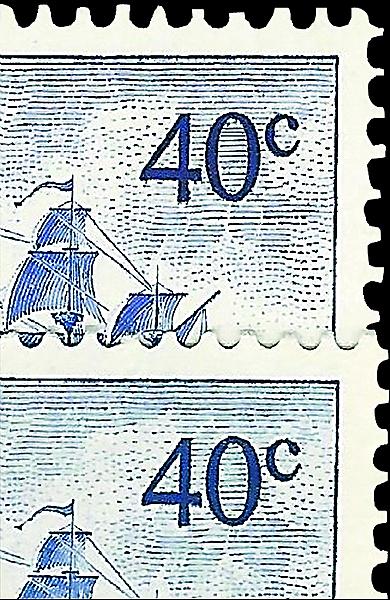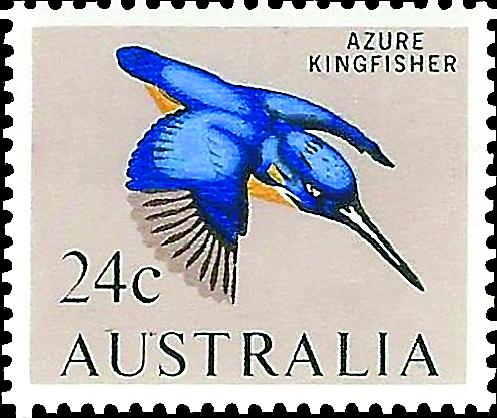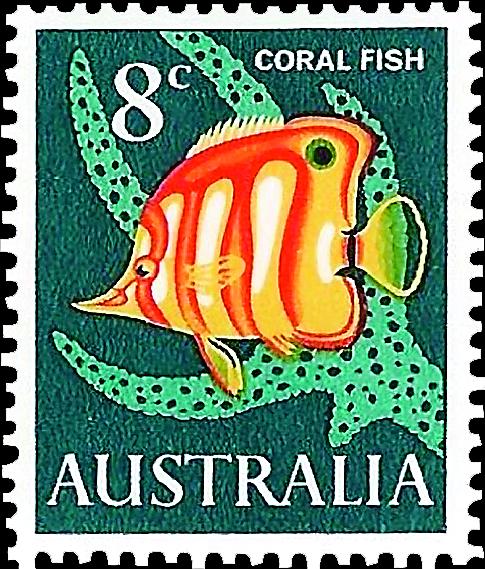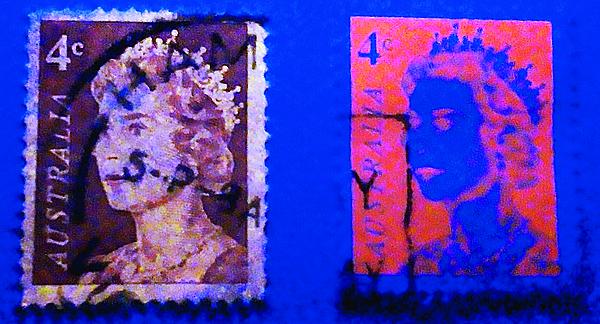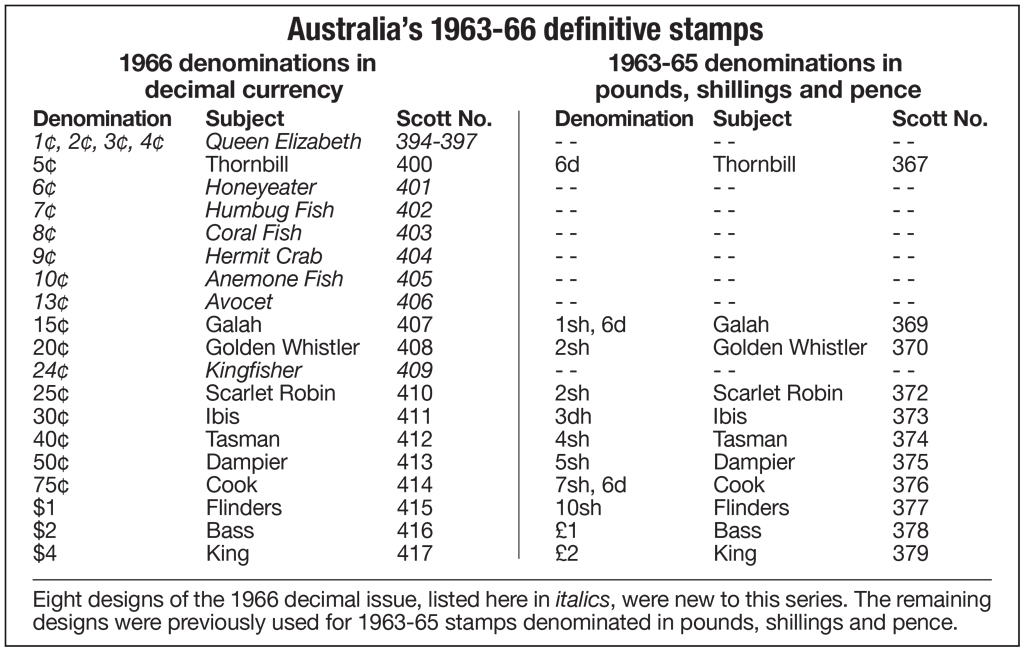World Stamps
Stamps Down Under: Australia’s conversion to decimal currency triggered new stamps
On Feb. 14, 1966, Australia joined most of the rest of the world by converting its national currency from pounds, shillings and pence to decimal currency consisting of 100 cents to the dollar.
Of course, new coins and paper money were issued, but bonds, contracts, promissory notes, receipts and thousands of other financial instruments that contained printed monetary data had to be updated into the new currency.
And let’s not forget postage and revenue stamps that needed to be changed from pence and pounds to cents and dollars.
It was a massive undertaking that, surprisingly, went fairly smoothly.
The conversion to decimal postage stamps was carefully orchestrated.
The pence, shilling and pound stamps were withdrawn from post offices at the end of business on Saturday, Feb, 12, 1966, but remained valid for postage until Feb. 13, 1968.
On Monday, Feb. 14, 1966, 22 newly denominated stamps were placed on sale.
Half of these stamps bore a striking resemblance to the previous pence, shillings and pounds stamps. The other half were printed with new designs.
The new-design stamps for the decimal issue are listed in italics in the accompanying table.
The low denominations of the decimal issue show images of Queen Elizabeth II.
The middle denominations depict fish and fowl, and the high denominations show important navigators.
None of the decimal-denomination stamps are difficult or expensive to collect unless you want to expand the collection to include varieties that are difficult (and pricey) to acquire.
The 1¢ through 4¢ Queen Elizabeth II stamps are the easiest to obtain. Specialized catalogs of Australian stamps list dozens of printing retouches for these four intaglio-printed (engraved) stamps.
Finding the varieties in inexpensive mixtures is a possibility, but it takes an enormous amount of patience, good eyesight, and excellent magnifying glasses to discover them.
Australia, like so many other nations, was experimenting with mail-sorting equipment in the 1960s, working on methods that would make sorting and postmarking faster. The first decimal Australian stamps were printed on Helecon phosphor-coated paper that glows pink or slightly orange when subjected to ultraviolet light.
The 4¢ Queen Elizabeth stamp had a number of experimental printings that ranged from blotchy Helecon coating, to using Helecon-infused printing ink (which glows bright red under UV light) on coated paper (which glows bright blue when viewed under UV light).
The 4¢ stamp was issued in both sheet format and booklet format. The booklets contained three panes of five stamps and one label and sold for 60¢.
Quickly addressing a postal rate increase in 1967, the booklet stamps were surcharged with a 5¢ denomination over the original 4¢ denomination.
The middle denominations, 5¢ through 30¢, sported fish and other marine life, as well as fowl, and were printed in multicolor photogravure.
The fish subjects were all new designs. Only three of the birds designs were new, showing the honeyeater, the avocet and the kingfisher.
The difficult-to-acquire stamps in this series are those with missing colors.
Every value from the 5¢ Thornbill to the 30¢ Ibis is known to have missing colors, with the exception of the 9¢ Hermit Crab.
The Fish and Fowl stamps are larger than the Queen Elizabeth definitives, which makes collecting socked-on-the-nose postmarks an attractive option. You can certainly find them in inexpensive mixtures.
While you’re at it, keep an eye out for color shifts. Although not considered errors, color shifts are varieties that can change the appearance of a stamp dramatically.
The Navigators group tops out Australia’s first decimal stamps. The denominations range from the 40¢ Abel Tasman stamp to the $4 stamp featuring Adm. Phillip Parker King.
These stamps were printed by intaglio, and all six stamps have various retouches that are documented and illustrated in Brusden White’s Australia Specialized Catalog.
The easiest variety to find shows two types of the 40¢ Abel Tasman stamp, as defined in the specialized catalog.
Type 1 has darker and more complete shading lines within the zero of the “40” denomination, and more column-like shading below the denomination. The Type 2 variety has lighter shading in the zero and below the denomination.
The 75¢ and $1 denominations are recorded as being known on non-Helecon paper.
It is worth looking for these varieties because the specialized catalogs reward them with a hefty catalog value.
Whether you collect one each of Australia’s first decimal currency stamps or delve deeper by looking for varieties, it will be an interesting and attractive collection.
The first decimals also make a great stopping place for an early Australia collection, or a suitable starting place for a collection of modern Australian stamps.
MORE RELATED ARTICLES
Headlines
-
Postal Updates
Oct 7, 2024, 5 PMUSPS plans to raise postal rates five times in next three years
-
US Stamps
Oct 7, 2024, 3 PMMcMurtrie dismissed as APS education director following Sept. 21 arrest
-
US Stamps
Oct 7, 2024, 12 PMVasiliauskas named president of Mystic Stamp Co.
-
US Stamps
Oct 6, 2024, 5 PMApgar souvenir card available
